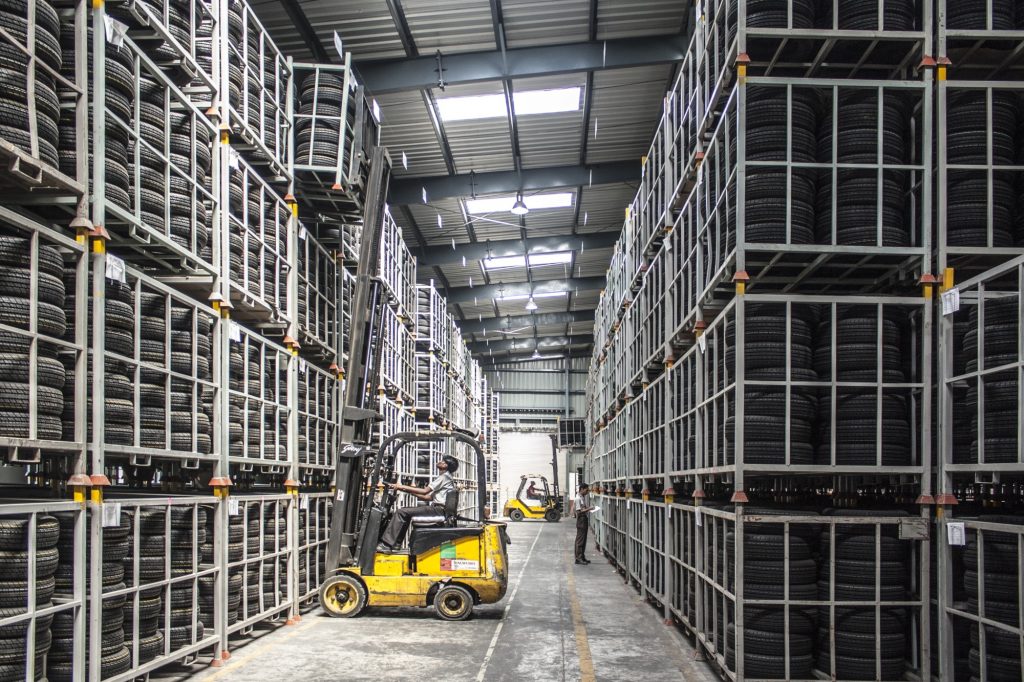Optimizing Your Facility: A Complete Guide to Warehouse Layout Design
A decently organized warehouse can not only optimize your business’s workflow, but can also benefit your customers. It works to quicken your shipping time meaning your clients get their orders faster.
Whether you’ve upgraded to a bigger warehouse or simply want to overhaul the one you’re already running, creating a warehouse layout design is a great way to ensure your business can keep up with anything thrown its way. But how can you even go about doing that?
Luckily, we’re here to help. Read on to learn everything you need to know about creating the perfect warehouse layout for your business.
Plan Ahead
The first thing you should focus on is coming up with a plan.
When you plan ahead, you spend less time course-correcting and more time focusing on the things that matter for you and your business. When you’re not focused on or worried about what’s happening in the future, then you give yourself the chance to prepare your business for anything that might be thrown its way.
1. Measure and Map It Out
The first step to planning ahead is measuring and mapping everything out.
Designing a map or blueprint of your space is the best place to get started. You can use a pen and paper, download a program, or you can even schedule a consultation with a professional here: http://www.biltindustries.com/custom-design-engineering/
No matter what you decide to do, it’s important to ensure that you’re not taking any shortcuts with your measurements or what you decide to do with them. You also want to ensure that you’re developing a layout that works best for you and your staff.
To start with this, label different areas along with the direction of the workflow. This means walking paths and the flow of shipments and other products. From there, you can move to optimization.
2. Plan to Optimize Your Warehouse Layout
This is all going to depend on the amount of space you have available in your warehouse, and also which methods of optimization and organization you choose to utilize.
There are different methods you can choose, but a popular one is to set things up in aisles like a grocery store. You can group things together by type or even by brand.
A good way to go about doing this is to determine how much space you’re actually working with inside the warehouse, and then moving from there. Once you know the square footage, you can dedicate a certain percentage of that solely to storage.
3. Keep Your Processes in Mind
Another big thing to keep in mind is your company’s processes. This means things like:
- Warehouse receiving and stowing
- Inventory tracking
- Warehouse picking
- Shipping process
You want to lay these processes out in a way that makes sense for your warehouse, and you want them all to run efficiently so you know your warehouse is running well. If you fail to address any of these processes in an effective manner, then it can lead to problems like stock control issues, ineffective management, and even miscalculated inventory levels.
4. Plan the Proper Equipment
No matter what kind of business you run, your warehouse is going to need equipment to run smoothly. The type of equipment you choose is going to depend on your business, but it’s important to remember that your layout is also going to determine the things you can have around.
If your aisles aren’t at least 12-13 feet wide, then you shouldn’t try to shove a forklift between them. Pallet jacks, however, are a little easier to work into small spaces between your aisles and anywhere else it might need to fit inside your warehouse.
Taking proper safety measures into account is another important thing to do whenever you’re working with tools and machinery in your warehouse.
5. Take Time for Trial and Error
From the first time you take measurements to order your equipment, it’s important to remember that the entire process of creating a warehouse layout and design that works for you is a lot of trial and error. That means allowing yourself the time and patience that it might take to figure everything out, and knowing that you might not get it the first time around.
You might never find the perfect layout. What might work one quarter could change the next, and that’s OK too. Change means you’re growing, and if you’re actually growing and need more space to compensate for that, then that’s another great reason to redesign your entire warehouse layout.
Before you actually start putting everything together, it can also be a great idea to test your layout. To do this, you can grab tape or some other object to mark your perimeters and take a walk through everything from there.
As you test, make sure you write down the results. Keeping a record of what worked and what needs to change is important to ensure you don’t make the same mistakes twice.
Design Suggestions
Once you have your measurements and a plan in place, it’s time to decide on a design. When you’re trying to optimize your design, however, it’s important to remember that what works for one warehouse, though, isn’t necessarily going to work for you.
We’re going to take you through a few basic design ideas and a few layouts, but you can always customize these to fit your warehouse. You can mix a few ideas together to create the perfect space for your business.
Separate Reception
Creating separation for your warehouse is important — it’s where deliveries are received, and where sorting and quality control is done. You want this area to be as big as possible, and you want it as far as from other things as possible so things don’t get confusing.
You want this area to be as big as possible, but if you don’t have enough space then you create a bottleneck at the entrance to keep things organized.
Space Out Loading and Unloading Areas
Just like you want to separate reception from everything, you also want your loading and unloading areas to be as far from one another as possible.
In most cases, these areas might already be built into the warehouse. If this is the case, then it’s going to be easy for you to easily access and connect to the dock area so deliveries can be loaded and unloaded efficiently.
In some cases, however, these areas are independent of the warehouse and you’ll need to adopt a different approach. Deliveries will need to be unloaded, placed onto a forklift, and then delivered separately to the warehouse. The same goes for loading deliveries, but you would load first and then unload onto the trucks.
Optimize Storage Areas
This can sound like it’d be a complicated thing to accomplish, but optimizing your storage areas is actually a lot simpler than you might’ve originally thought. Here are a few ideas:
- Use vertical storage
- Make use of underutilized space
- Store product in trailers for short-term or seasonal needs
- Reduce aisle width in your racking area
There are a few things to make note of with these suggestions, though, like reducing your aisle width. If you run forklifts and other equipment through this area, then you have to ensure you keep enough space for that.
If you’re using trailers or underutilized space, then you should create a plan for that beforehand. What’s going to go there? What’s happening to it after the season is over or the product has been used?
Keeping small things like this in mind is going to make it easier to plan ahead for the next time.
Picking, Shipping, and Packing Can Go Together
If your warehouse doesn’t already have a separate area for these three tasks, it can be a good idea to implement it. For a picking area, that’s simply the space where order preparation happens. When it’s placed with the packing and shipping area, then it becomes easier to optimize a workflow for all three tasks.
You can also add conveyor belts to speed up the process, but that’s going to depend completely on your warehouse and what it ships out.
Another way to help these areas, however, is with storage optimization. Make it easier on workers by placing popular items near the front, and by placing lesser-ordered items in areas that aren’t as easy to access.
Remember These Tips for Warehouse Layout Design
Now that we’ve gone over a few of the best ways to organize your warehouse layout design, it’s time for you to get started. Remember, though, that it can take time to get everything perfect. That’s why it’s important to take the time you need for trial and error when you’re putting everything together.
For more on the latest in business and shipping, check out the rest of our website.




